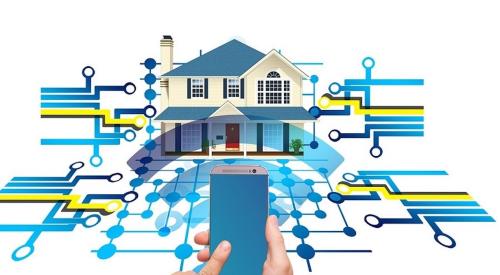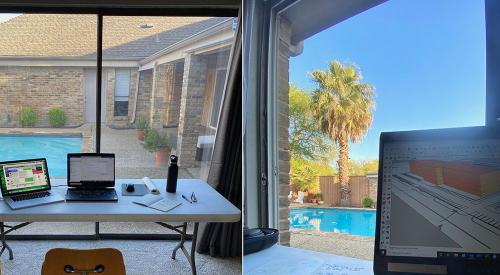| Contact Noelle Tarabulski at PB@buildertools.com
|
If you are confused about what you are buying and what you are getting from your Internet service provider, you are not alone. Conversations about the speed of my cable hookup versus your DSL are often rooted only in speculation. Let’s change that with a well-defined look at the full spectrum of Internet connectivity options.
With the assistance of Ray Clermont, my vice president of technical services, we’ve outlined some of the typical access services available throughout the country. This discussion should help you decipher what form of Internet connectivity you should use or considering moving to in the coming months.
Dial-up
Dial-up connectivity, which was the first technology connecting computers to Internet service providers (ISPs), uses analog modems and the POTS (plain old telephone system). The telephone system’s analog bandwidth, phone-line quality and Internet traffic load all limit the maximum speed at which you can download data.
The modems used for dial-up are, at best, capable of speeds up to 56 kilobits per second (kbps). This is a relatively slow connection speed, causing graphics-intensive Web sites (those with video streaming, for example) to take sometimes minutes to load. Despite the slow speed, dial-up networking is the most widely used Internet connection, with 46.7 million customers. It’s also the cheapest, ranging from $12 to $30 a month.
Cable
The second-best-known Internet connection is cable. Cable connectivity involves a cable modem connected to existing or new cable television lines. The same cable that brings you ESPN and CNN can also bring you the Internet, and, unlike dial-up networking, cable modem service lets you get on the Net without using a phone line.
Cable allows for downstream speeds up to 1.5 megabits (1.5 million bits) per second. Actual rates are considerably slower because cable Internet users have to share bandwidth with other users on the same cable network lines. So when your neighbors are downloading files, cable modem speeds drop dramatically. According to PC World test results published in March 1999, the 1.5 megabits-per-second speed usually averages out to about 382 kbps. That’s still more than six times faster than dial-up connections.
Cable connectivity is unavailable in most of the United States and for now is restricted primarily to home users. But businesses in cable-served areas are catching up. Service costs $30 to $40 a month in most markets, although in some areas the cheapest access costs $70.
DSL
The newest and fastest-growing broadband connection is the digital subscriber line. DSL uses existing copper telephone lines to deliver affordable, speedy remote access to the Internet without tying up the voice phone line. Plus, your data travel individually along your own line, unlike cable connectivity services, where bandwidth is shared with others.
DSL comes in two flavors:
Asymmetric is the DSL service in standard, everyday use. With ADSL, users average speeds up to 13 times faster than 56-kbps phone modems. ADSL also lets you simultaneously use one phone line for both voice and data (SDSL does not).
One drawback of ADSL is installation cost; the phone company needs to install a splitter on your phone line. Some vendors are beginning to offer microfilters, which you can install at each phone line yourself.
DSL connectivity requires special hardware on both ends. On your end, a DSL modem modulates digital information from your computer to send it along phone lines. A digital subscriber line access multiplexer (DSLAM) located at the phone company’s nearest central office then translates these signals. The DSLAM separates the voice from the data signals, sending the data to an ISP (which is frequently the phone company itself) and from there to the Internet.
The downside of DSL is that the farther you are from the central office, the slower your connection is. As you move away from the central office, more distortion enters the line, and the signal deteriorates. If you live more than 3 miles from the nearest central office, you can’t get DSL at all.
You can tap into DSL power for as little as $39.95 per month, but DSL typically costs $150 to $200 per month for business-class service.
The Others: T1, T3
There are always other options for high-speed connection, but the higher the speed, the higher the cost. The leading types of leased and network services offered by telephone companies are T1 and T3.
In some markets, providers offer shared T1 lines. Performance on these varies depending on other users on the line. In some instances, minimum speeds are guaranteed on shared T1.
A T1 line is a high-speed digital connection capable of transmitting data at approximately 1.544 million bits per second. A T1 line is typically used by large and medium-size companies with heavy network traffic and is basically unnecessary for smaller business use. The cost of a T1 varies from $500 to $1,100 for installation and $450 to $750 (or higher) per month.
A more powerful version of the T1 line is the T3 line, which is the equivalent of 28 T1 lines. Large companies and ISPs use this service for the backbone of their networks.
The Up-and-Coming: DirecPC
This is a viable option that is starting to make inroads in some markets. At this point I do not have comment on its reliability. You can find out more about DirecPC by going to its Web site (www.direcpc.com). If your office, construction trailers or sales offices are out in the "boonies," you should consider this. We are looking at this as an option for a number of our clients. For some of our remote clients, it is the only option, and we expect good things given what we’ve read so far.
The End of Speculation
The bottom line for small and medium-size businesses in the battle for Internet connectivity breaks down to DSL’s being a touch faster and more consistent than cable. Dial-up connections are like running in deep sand, and unless you own an information technology company or ISP, T1 and T3 lines are unrealistic. The DirecPC route has yet to be tested for performance and reliability but looks like a viable alternative. So check out your options and get the access to the Net that your company deserves.










